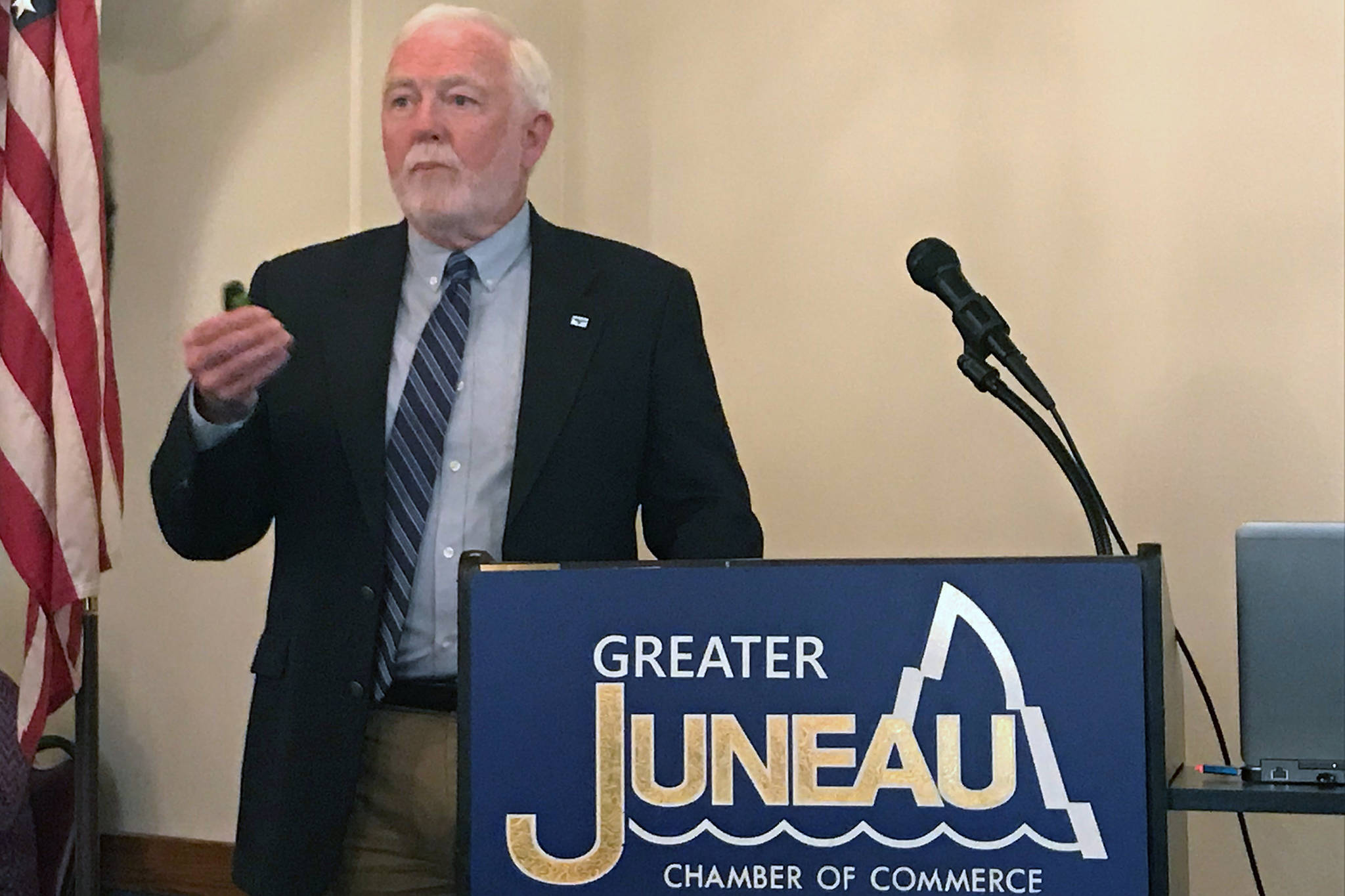At this point, budget cuts are the norm for the University of Alaska system.
In the past five years, the university has had to cut about 1,200 jobs, University of Alaska Southeast Chancellor Rick Caulfield said to the Juneau Chamber of Commerce on Thursday. This year, with extensive budget cuts proposed by Gov. Mike Dunleavy’s administration, university officials are bearing down and seriously looking at the future of the university system.
One of those options, Caulfield said, is having just one accredited university instead of three. Instead of the three universities (Anchorage, Fairbanks and Southeast) all having their own programs and their own autonomy, they would all have a “cookie-cutter approach,” Caulfield said.
It’s an idea that’s been floated in the past, he said, but the Alaska Legislature is asking the Board of Regents to do it once again.
“A lot of people have said over the years, ‘Why do we have three universities? Why don’t we just have a single University of Alaska?’” Caulfield said. “You can think about that and there’s a logic to it in terms of efficiencies and so forth, but at the same time, Alaska is a vast state. The programs and the needs of students in the Anchorage area are quite different than in Fairbanks and are quite different in Southeast Alaska.”
The Board of Regents will soon form a task force to look into it, Caulfield said, and members of the task force will likely have recommendations for the regents (and for the Legislature) in September or November.
[UAS student becomes first to benefit from Coast Guard scholarship program]
The Legislature’s request for this task force, Caulfield said, is included in the Legislature’s budget proposal — which has not yet been passed. That proposal, which was put together by a committee of members from both the House and Senate, would cut the university system’s budget by just $5 million instead of more than $130 million (or 41 percent of the state’s funding for the system) as proposed by the governor.
The issue of accreditation has been a hot topic this year for the system, as UAA lost its accreditation for its education program in December. Caulfield said Thursday that “it should never have happened, and the leadership there should have seen it coming.” The Board of Regents voted in April not to pursue reaccreditation for many of the programs in the school of education.
Caulfield said he’s skeptical of having just one university for the state. The separate universities all set themselves apart and can serve their populations effectively with the differences in their academics, he said.
“Facetiously, I talk about the fact that a Nanook sports fan in Fairbanks is not ever going to be a Seawolves sports fan in Anchorage,” Caulfield said.
Auke Bay Marine Station in limbo
One byproduct of the state’s budget uncertainty, Caulfield said, is a project UAS has had on its mind for a long time.
The university has been working to build the Auke Bay Marine Station, which would be a center for science studies for UAS students. It takes the place of a National Oceanic and Atmospheric Administration (NOAA) lab that was there previously.
The $13 million project is on hold for the moment, Caulfield said Thursday, as the university awaits the state’s final decision on the budget. He said that under the Legislature’s relatively small proposed cut, the project would go forward as planned. A larger cut might force them to change their plans around, he said.
Last summer, university officials told the Empire that they were aiming for the facility to be finished in 2020. Caulfield said that’s still possible.
“That is my hope, that we come to a reasonable resolution of the budget situation that allows us to move ahead expeditiously and allows us to stay on track with the construction project,” Caulfield said.
• Contact reporter Alex McCarthy at amccarthy@juneauempire.com. Follow him on Twitter at @akmccarthy.

